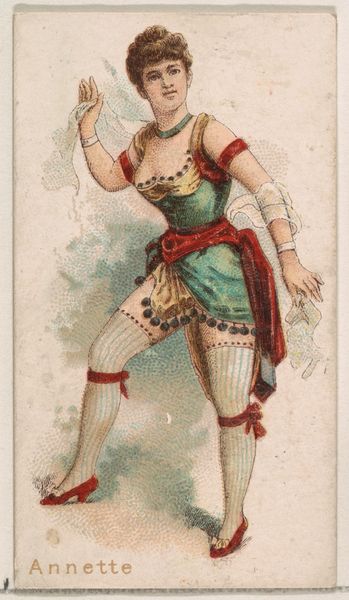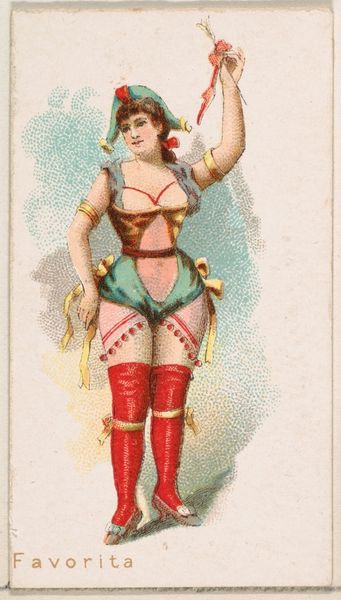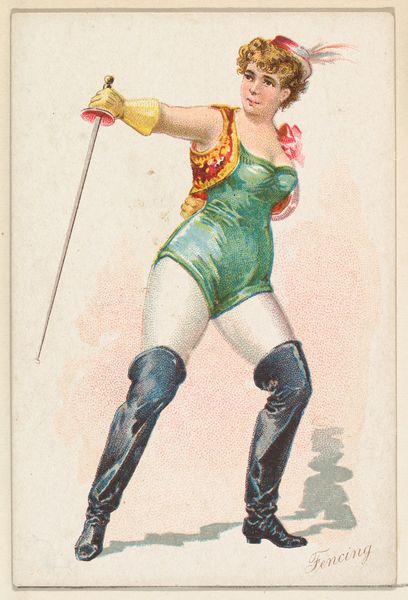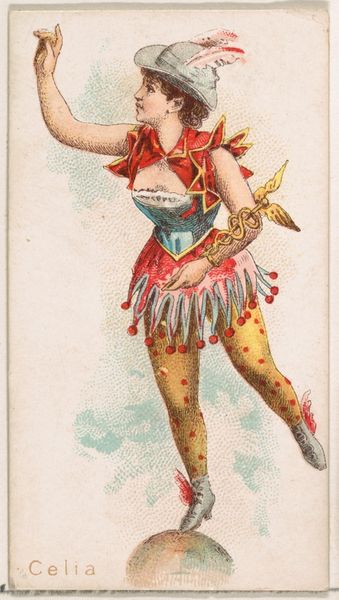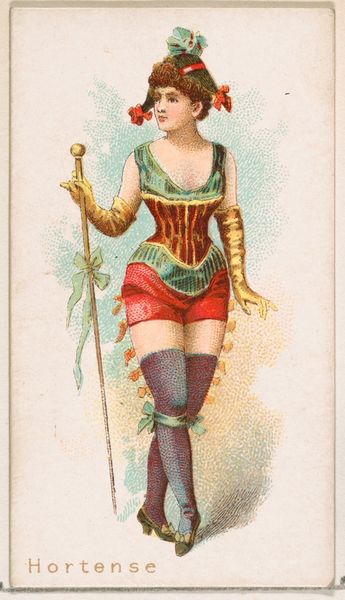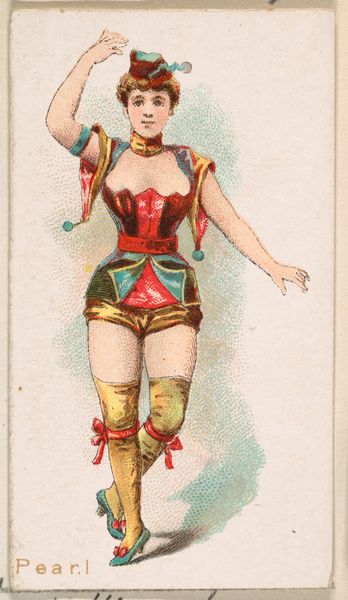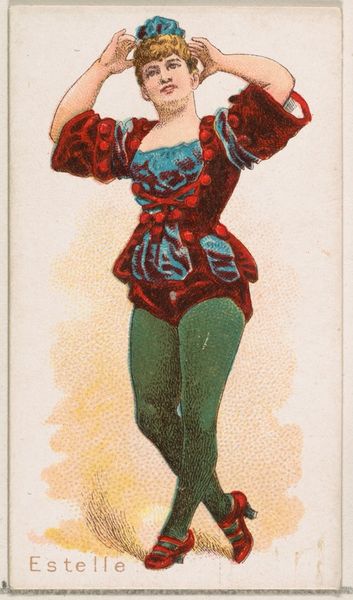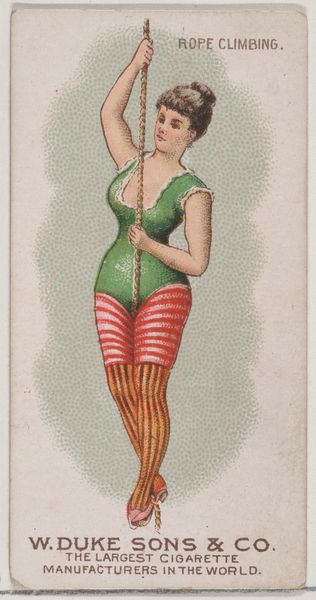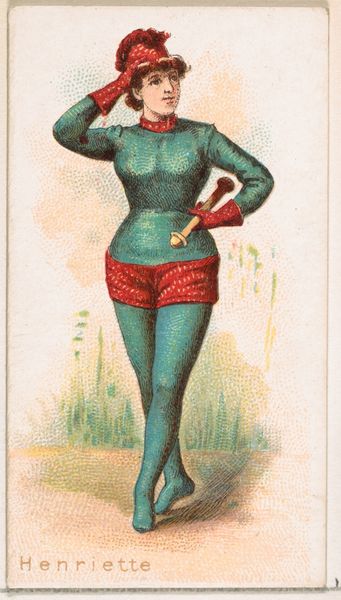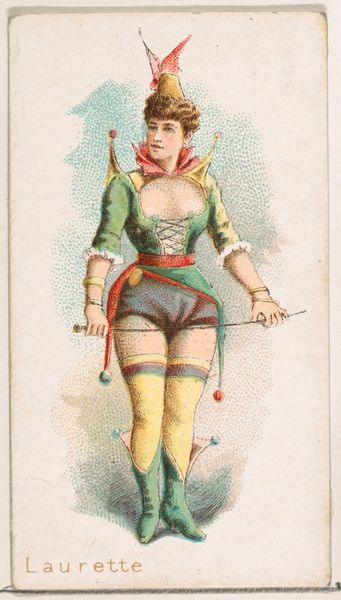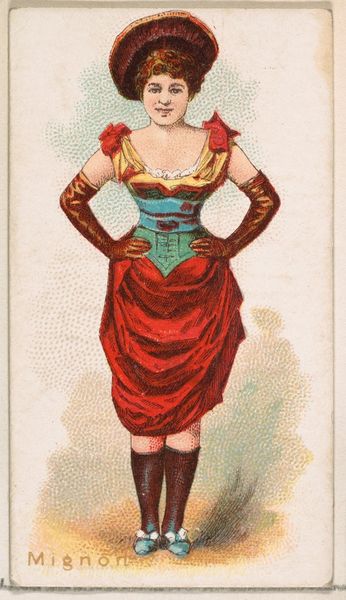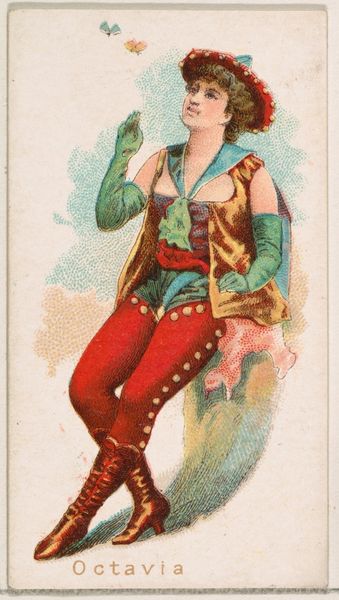
Numa, from the Ballet Queens series (N182) issued by Wm. S. Kimball & Co. 1889
0:00
0:00
drawing, coloured-pencil, print
#
portrait
#
drawing
#
coloured-pencil
# print
#
caricature
#
children publication design
#
coloured pencil
#
academic-art
Dimensions: Sheet: 2 3/4 × 1 1/2 in. (7 × 3.8 cm)
Copyright: Public Domain
Editor: This is “Numa,” from the Ballet Queens series, made by William S. Kimball & Co. around 1889. It's a coloured-pencil print. The bright colours are striking, but the theatrical pose feels almost like a caricature. What social role do you think these images played at the time? Curator: It’s fascinating to consider how these “Ballet Queens” trading cards reflect the era's cultural values and consumerism. Think about it: they were included in cigarette packs, making performing arts accessible—in a way—to a wider public, especially men. These images commercialized beauty and performance, didn’t they? The figure is exoticized, almost, rendered as a fantasy object through the cheap commercial design and style. Editor: So, even though it appears to be a simple collectible, it carries complex cultural messages about gender, class, and the popularization of art. Do you think the exotic rendering reflects the globalized interests of the late 19th century? Curator: Precisely. It suggests an emerging global consciousness, intertwined with colonial undertones. The distribution of these cards reinforced certain perceptions and power dynamics within society. How does knowing this shift your initial perception? Editor: It completely changes it. What I initially saw as a quirky portrait, I now view as a tool for shaping public opinion and reflecting societal structures. It is far more calculated than initially evident. Curator: Exactly. Context illuminates how even seemingly innocent images actively participate in cultural narratives. What do you take away from our analysis of this image? Editor: I've gained a richer understanding of the impact of popular imagery, and how mass production can be a method of shaping socio-cultural beliefs. Thanks. Curator: A worthwhile analysis; consider the institutions involved and what they represent as you study other art works.
Comments
No comments
Be the first to comment and join the conversation on the ultimate creative platform.
